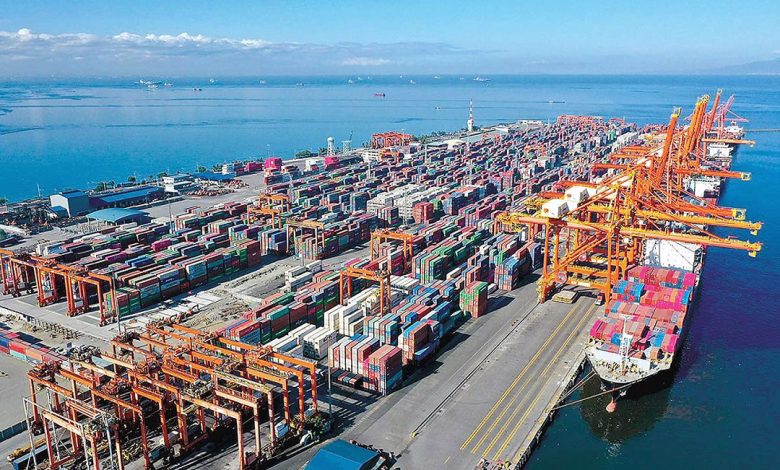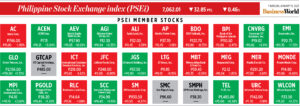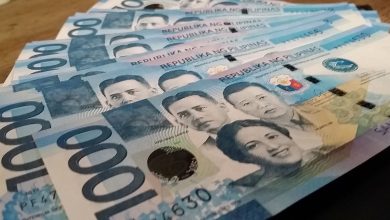September exports, imports grow

By Revin Mikhael D. Ochave, Reporter
Philippine exports and imports rose in September amid a pickup in global economic activity, the local statistics agency said on Friday.
The value of exports increased by 6.3% year on year to $6.68 billion, better than 3.4% a year earlier, the Philippine Statistics Authority (PSA) said in a report, citing preliminary data.
The value of imports also rose by a quarter to $10.67 billion from a year earlier, reversing a 9.9% decline a year ago.
The September export and import figures resulted in a trade deficit of $4 billion, wider than $2.27 billion a year earlier and the revised trade deficit of $3.51 billion in August, the PSA said.
This brought the nine-month trade gap to $29.19 billion worse than $17.95 billion a year earlier.
Nine-month exports rose by 18% year on year to $55.68 billion, while imports increased by 30.3% to $84.87 billion.
The Development Budget Coordination Committee expects exports and imports to rise by 10% and 12% this year.
Exports of manufactured goods rose by 4.3% to $5.43 billion and contributed 81.2% of total exports in September.
Exports of electronic products increased by 5.4% to $3.82 billion, accounting for 57.1% of total exports. Of the total, semiconductors contributed $2.85 billion.
Exports of mineral products also improved by a third to $707.14 million, while agro-based products fell by 0.5% to $418.37 million.
Exports of forest products rose by 19.7% to $34.59 million, while petroleum products fell by a third to $214,108.
Meanwhile, imports of raw materials and intermediate goods rose by 30.1% to $4.51 billion, while capital goods rose by 8.3% to $2.98 billion. Consumer goods increased by 5.3% to $1.68 billion, while mineral fuels, lubricants and related materials more than doubled to $1.43 billion.
The country’s September trade performance was within expectations, said Ruben Carlo O. Asuncion, chief economist at UnionBank of the Philippines, Inc.
“Imports were expected at 21.1%, with the actual figure at 24.8%, and exports were estimated at 6.4%, with the actual number at 6.3%,” he said in an e-mail.
He also traced higher import numbers to further economic reopening and companies restocking on products before the holiday.
“The import headline figures seem to indicate that while the economy is still far from perfect shape, it has recovered substantially from previous quarters,” Bank of the Philippine Islands (BPI) Lead Economist Emilio S. Neri, Jr. said in a Viber message.
September imports were bigger than any month in 2019, with capital spending sustaining its rise toward full recovery, he added.
Trade Secretary Ramon M. Lopez traced the export performance to the reopening of global markets. “This is due to the reopening of the global markets, and the protocol we have adopted even during the enhanced community quarantine days when we allowed 100% operating capacity for export industries,” he said in a mobile phone message.
“The higher imports are expected as economic activities are bouncing back with the easing of quarantine restrictions,” the Trade chief said. “You will see that bulk of imports are raw materials, intermediate and capital goods, which are inputs to our industries.”
Nicholas Antonio T. Mapa, ING Bank NV Manila Senior Economist, said imports increased from low levels last year.
“Imports have indeed rebounded as the economy gradually hums back to life,” he said in an e-mail. “However, a big reason for the surge in inbound shipments can be traced to international developments and to a lesser extent due to the rebound in the economy.”
Mr. Asuncion expects the country’s exports to grow by 17% this year, while imports would probably rise by 36%.
The widening trade gap could weigh the peso as the economy continues to recover, Mr. Neri said. “This is more so if the Bangko Sentral ng Pilipinas (BSP) decides to keep policy settings ultra-accommodative.”
In September, BSP kept the key policy rate at 2%. Overnight deposit and lending rates remained at 1.5% and 2.5%.
“The wider trade deficit, and more importantly, the movement of its components suggest that GDP momentum has improved but remains subdued and will need some time before a full recovery is made,” Mr. Mapa said.




